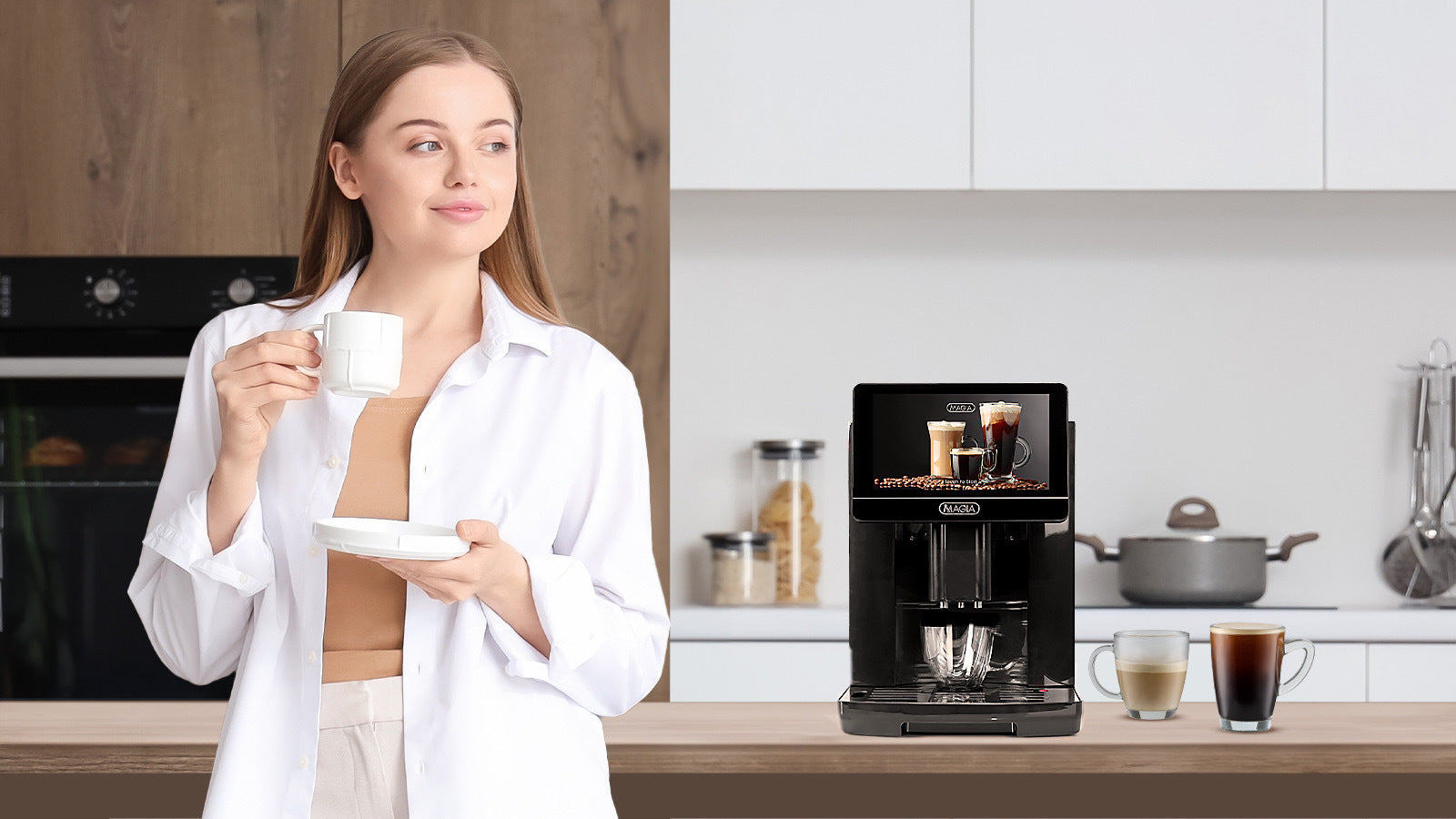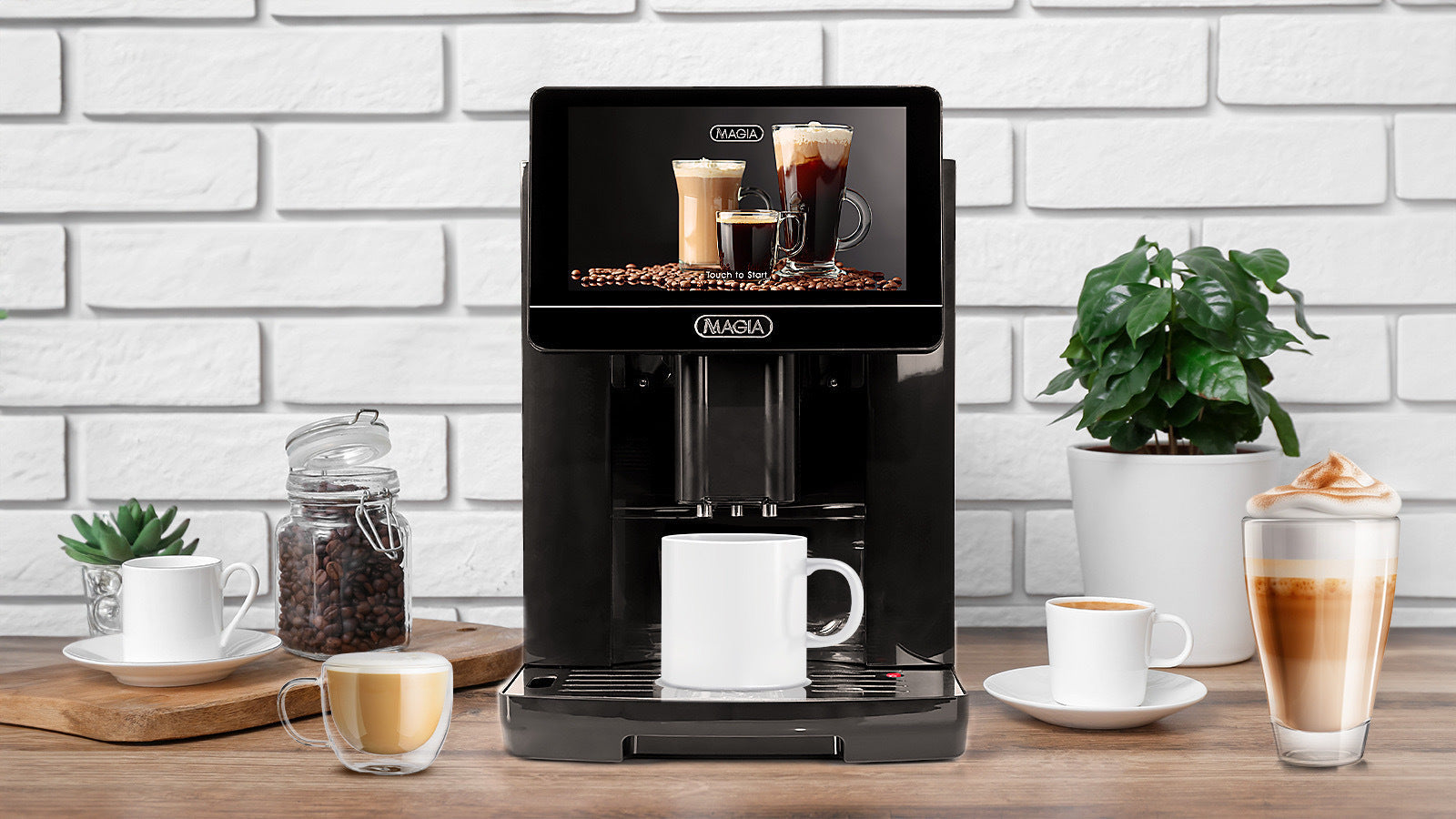
Espresso Machine vs. Moka Pot: Which is Right for You
Choosing between an espresso machine and a Moka pot can be a delicious dilemma for coffee lovers. Both methods promise a bold and flavorful brew, yet they diverge significantly in their brewing processes, costs, and the final characteristics of the coffee they produce. This guide will unravel the intricacies of each method, empowering you to select the brewing companion that perfectly aligns with your taste, budget, and lifestyle.
Each method offers a unique approach to crafting your morning (or afternoon, or evening!) cup of joe. Espresso machines are known for their precision and versatility, while Moka pots boast simplicity and affordability. By examining the nuances of these brewing techniques, you'll gain the knowledge needed to make an informed decision and embark on a more satisfying coffee journey.
The Espresso Machine
Espresso machines are meticulously designed to force near-boiling water through the finely ground coffee at high pressure (ideally 9 bars). This pressure is essential for rapid extraction, resulting in a concentrated shot with complex flavors and a signature layer of crema (the light brown froth on top). Espresso machines are sophisticated appliances, typically featuring a water reservoir, pump, boiler, group head (where the portafilter locks in), and often a steam wand for milk frothing.

The Perks of Espresso Machines
Espresso machines offer a unique brewing experience with several advantages. Speed is a key factor, as brewing a shot takes mere seconds, perfect for a quick caffeine boost on busy mornings. Consistency is another hallmark; with proper technique and a consistent grind, espresso machines deliver reliably flavorful results.
Equipped with steam wands, many models open up a world of lattes, cappuccinos, and other milk-based beverages, adding a layer of versatility to your coffee routine. Moreover, you have control over grind size, water temperature, and extraction time, allowing you to tailor the flavor profile to your exact preferences.
The Drawbacks of Espresso
Despite their allure, espresso machines come with a few drawbacks. Cost is a significant consideration, as quality espresso machines can be a substantial investment, ranging from a few hundred to several thousand dollars.
Maintenance is also essential, with regular cleaning and descaling (removing mineral buildup) necessary to maintain optimal performance. Achieving the perfect shot requires practice and understanding the variables involved, presenting a learning curve for beginners. Additionally, espresso machines can be bulky and require dedicated counter space, which might be a concern for smaller kitchens.
Espresso Quality
Espresso is renowned for its intensity, full body, and layered flavor notes. The crema adds a textural element and a touch of sweetness. It's often enjoyed as a short drink or a base for countless coffee beverages.

Espresso Machine Costs
The cost of an espresso machine extends beyond the initial purchase price. Consider the following: a high-quality espresso machine can range from several hundred to several thousand dollars, depending on features and brand.
A good burr grinder is essential for achieving the consistent, fine grind required for espresso, adding another $100 to $500 or more to the total cost. Tampers, milk pitchers, cleaning supplies, and other accessories can contribute to the overall expense. Regular descaling and potential part replacements will incur additional costs over time.
The Moka Pot
The Moka pot, sometimes called a "stovetop espresso maker," is a beloved and affordable way to brew strong coffee at home. Steeped in tradition, particularly in Europe, it is treasured for its simplicity, affordability, and ability to produce a robust coffee with espresso-like qualities.
The Mechanics of Brewing
A Moka pot consists of three main components:
-
- A bottom chamber for water
- A filter basket for coffee grounds
- A top chamber for the brewed coffee
As the water heats on the stovetop, it generates steam pressure. This pressure forces the water upwards through the coffee grounds, extracting flavor and aroma before reaching the top chamber as finished coffee.
The Moka Pot's Appeal
Moka pots appeal to coffee lovers for several reasons. They are significantly less expensive than espresso machines, typically costing between $20 and $100, making them an accessible option for many.

They are also straightforward to use and require no electricity, making them ideal for travel, camping, or anyone seeking a straightforward brewing method. Moka pots take up very little counter space, a boon for smaller kitchens. They are sturdy and often made of aluminum or stainless steel and can last for years with proper care.
The Moka Pot's Limitations
However, Moka pots do have some limitations. Achieving the perfect brew can take some practice. Factors like grind size (slightly coarser than espresso), coffee use, and stovetop heat intensity significantly impact the final flavor.
Unlike espresso machines, you have less control over brewing variables like pressure and temperature, which can sometimes lead to a harsher or more bitter brew if not careful. The smaller components can also be a bit fiddly to clean thoroughly.
The Moka Pot Flavor Profile
The flavor profile of Moka pot coffee is known for its boldness and intensity. It typically has a full body and a more pronounced bitterness than espresso but lacks the signature crema. Many find it a satisfying and flavorful substitute for espresso, especially given its affordability and ease of preparation.
Moka Pot Costs
The cost of a Moka pot is straightforward. Prices typically range between $20 and $100, depending on the brand, material (aluminum or stainless steel), and size (cup capacity). Unlike espresso machines, grinders or accessories are not included.
Espresso Machine or Moka Pot
Ultimately, deciding between an espresso machine and a Moka pot depends on your preferences, budget, and daily routines.
Espresso machines shine with speed, consistency, and versatility, offering a gateway to a vast world of coffee beverages. However, they demand a more significant financial investment and ongoing maintenance.
Meanwhile, Moka pots are charming with their affordability, simplicity, and portability, making them an excellent choice for budget-minded coffee lovers or those seeking a reliable travel companion. They may require some practice to master, and their customization options are limited compared to espresso machines, but they consistently deliver a satisfying, robust brew.
Consider your priorities carefully. Do you crave the precision and variety of espresso, or do you favor the simplicity and affordability of a Moka pot? Are you a coffee lover who enjoys experimenting with different flavors, or prefer a straightforward and reliable brewing method?
By weighing these factors and reflecting on your coffee habits, you can confidently choose the best brewing method to enrich your daily coffee rituals. Whichever path you choose, may your coffee journey be filled with delightful aromas and satisfying sips!
Looking for coffee recipes? Visit Zulay’s Kitchen Recipes for more inspiration!

Frequently Asked Questions
Can I use regular ground coffee in a Moka pot?
Yes, you can use regular ground coffee, but for the best results, use coffee ground slightly finer than drip coffee but coarser than espresso.
How long does an espresso machine last?
With proper maintenance, a high-quality espresso machine can last for many years, often over a decade.
Is the Moka pot coffee as strong as espresso?
Moka pot coffee is strong but not as concentrated or creamy as espresso due to the lower pressure used in brewing.
Can you make a latte with a Moka pot?
Yes, you can make a latte with a Moka pot by brewing strong coffee and adding steamed milk, though the texture will differ from a traditional espresso-based latte.
What’s the best material for a Moka pot?
Stainless steel is durable and less likely to impart flavors to the coffee, while aluminum is lighter and heats up quickly. Both materials have their advantages.
Can I use an espresso machine for making regular coffee?
While you can make an Americano (espresso with added hot water) to mimic regular coffee, espresso machines are not designed for brewing drip-style coffee.
How do I know when to replace my Moka pot gasket?
Replace the gasket when it becomes brittle, cracked, or if you notice leaks during brewing.
Are there any safety concerns with using a Moka pot?
Ensure the safety valve is clean and functioning properly to avoid pressure build-up, and always follow the manufacturer’s instructions.


























Leave a comment
This site is protected by hCaptcha and the hCaptcha Privacy Policy and Terms of Service apply.